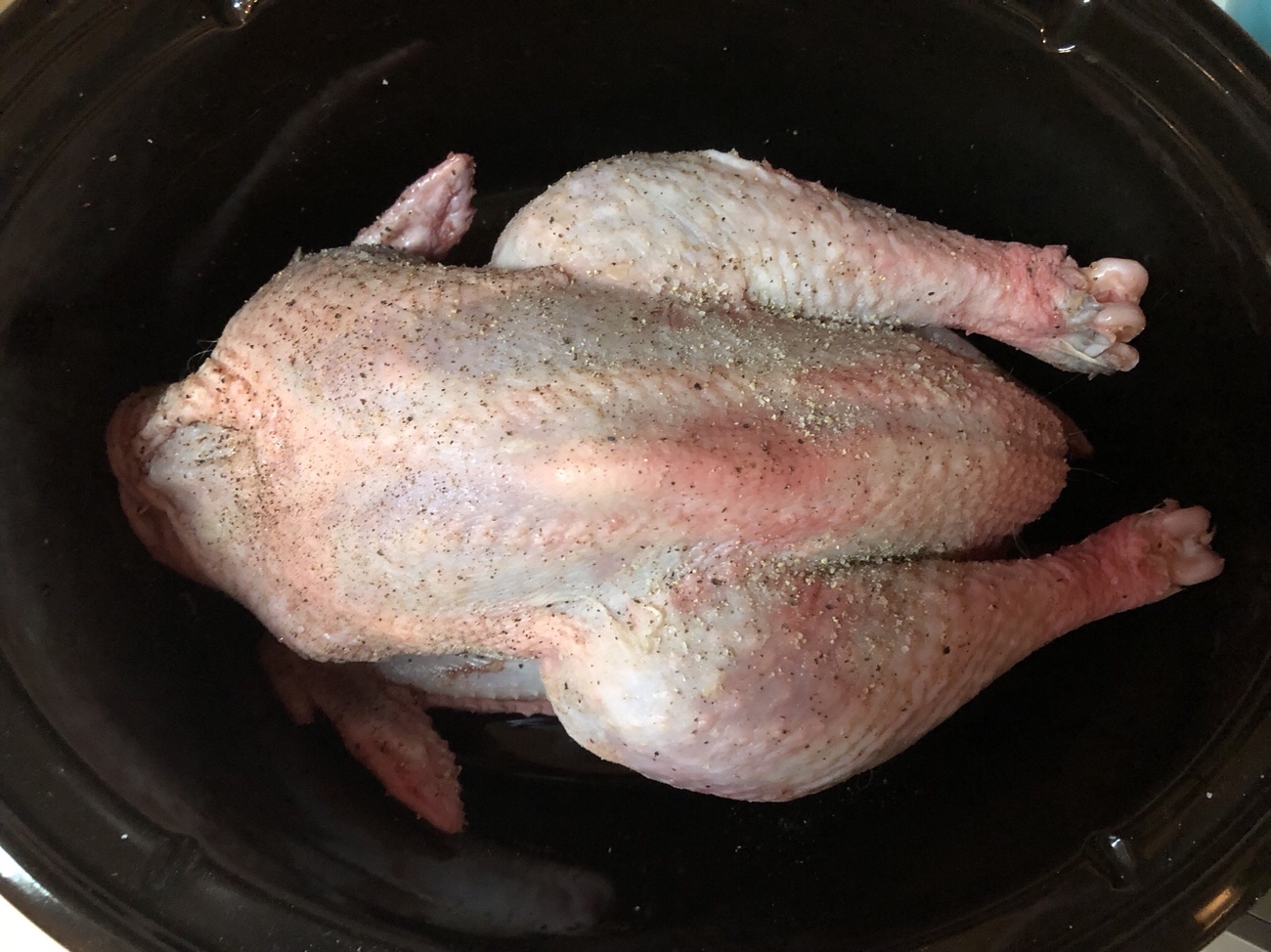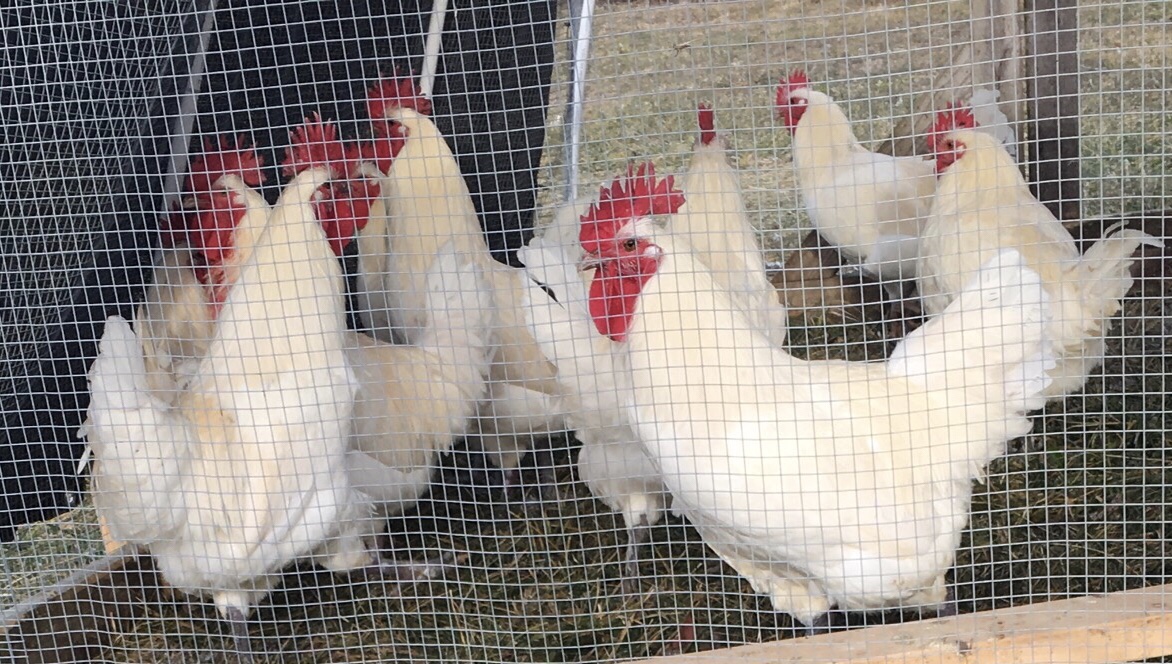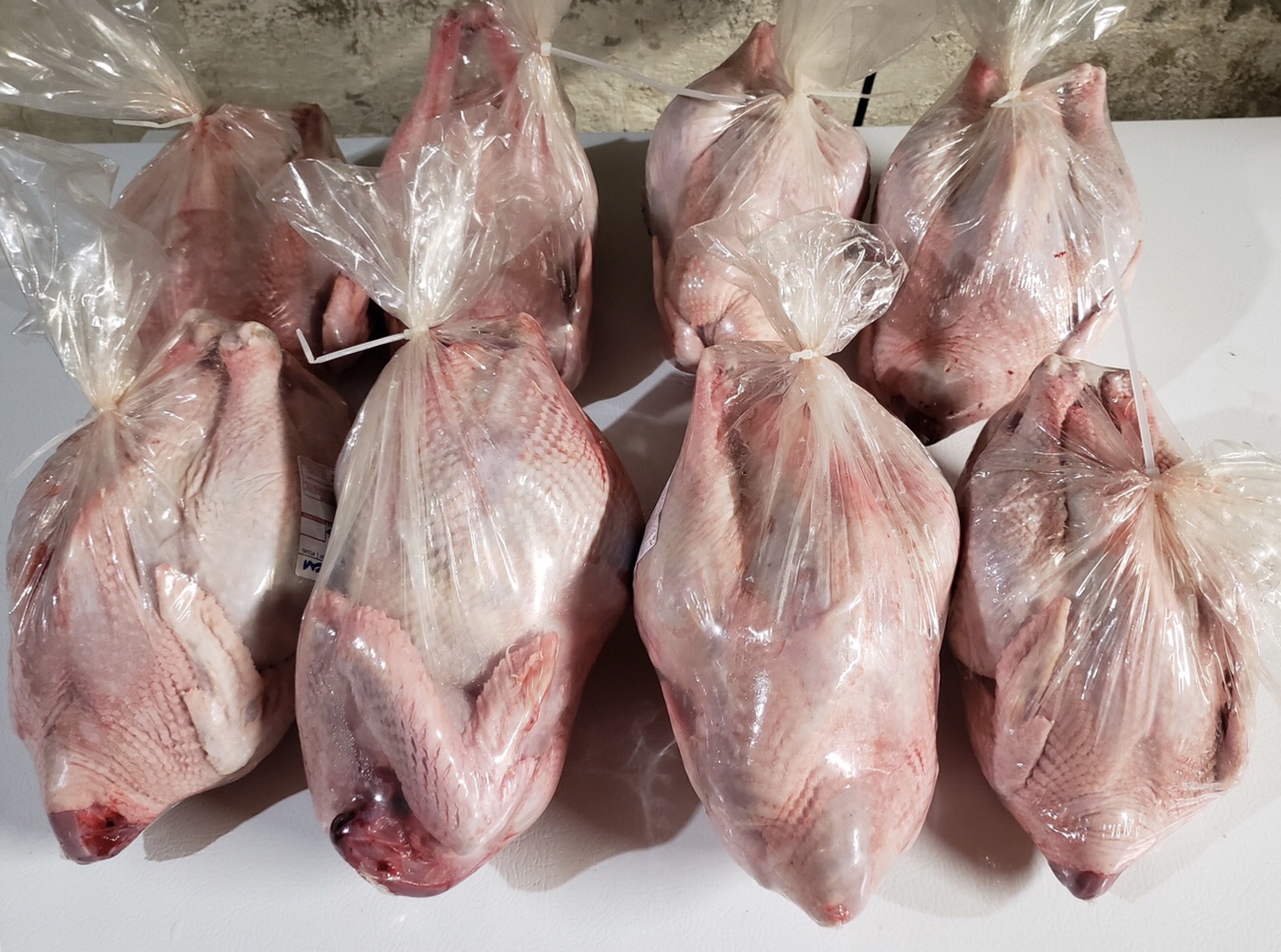
With each chicken egg hatch, around half of the chicks will be males. What to do with all of those cockerels? As we mentioned in an earlier post, you must have a plan for them or it can get real, fast: when cockerels’ hormones kick in, they can become a handful.
We always try to sell our gorgeous boys first, but inevitably end up with more than we can sell, and have found that it’s difficult to sell roosters in our area. The reasons are probably manifold: conceivably, some people live in areas where they’re not allowed to have roosters, they don’t want or need fertile eggs, or they’re simply afraid of getting a rooster that might become aggressive. It also doesn’t help that many local people simply give them away. No free roosters here, though: we firmly believe that roosters have value, both as protectors of flocks and as meat animals.
Once cockerels (young roosters) begin to crow and start skirmishing with other cockerels, we separate them into a “roosters only” tractor, where they’re raised until they’re rehomed or processed. With no pullets around, there’s far less conflict. They can still enjoy the fresh air, sunshine, bugs, and grass, too. They’ll live in their tractor, which is moved to fresh pasture daily, for at least 5 months.

When processing day comes, it’s a somber occasion, and the work is handled as respectfully and efficiently as possible. It’s hard work, it’s messy, and it should be. At the end of the day, we have neatly-packaged chicken ready to go into the freezer to supply us with the most delicious chicken we’ve ever eaten, as well as nourishing bone broth. We appreciate every bite.

We don’t eat much meat…no doubt due, at least in part, to knowing what goes into hatching, raising, and butchering our chickens. We care for them for several months (typically 5+ months) and we get to know them. We’re not buying something already packaged that hardly resembles an animal at all, a creature that spent its short (for factory-farmed meat chickens, that’s typically just 8 weeks) life in depressingly crowded and unnatural conditions while they await butchering day. If more people raised and butchered their own meat animals, I think there would be far less meat consumption.

We’ll eat our succulent rooster, knowing that we took responsibility for his life and death, and that we actively worked to ensure that both were of good quality. Some people question whether it’s worth eating roosters at all; I have yet to eat a rooster, even one over a year old, that wasn’t rendered tender and delicious by the slow cooker. Trust me, you wouldn’t even guess that it was a rooster. The terroir – influenced by the verdant pasture greens, the diverse insect life, the air and water, the non-GMO fermented feed, the ability to run around and stretch wings – comes through in flavor that is incomparable: there is a definite “chicken” flavor, distinct, deep, and complex. Our chicken doesn’t taste like anything else, and it’s so good that we prefer to only season with salt and pepper to let its flavor shine.

And the bone broth? Thick and gelatinous with collagen and rich with chicken flavor, it’s incomparable. Even if you’re not a bone broth fan, use it the way you’d use stock and help minimize waste. You can make an incredible chicken soup with it, and you can enjoy it anytime, not just when you’re feeling under the weather. Your dogs will also thank you for sharing this amazingly nutritious elixir with them – you know how much they love “people food”, and they’ll think that broth is people food (because it is)!

We respect an individual’s decision not to eat meat, whether for ethical or dietary reasons, but we also respect the people who raise their meat animals with the dignity and care they deserve, as well as consumers who seek out those small-scale farmers that raise their animals with this philosophy. To those who seek out ethically-raised meat – which allows animals to more naturally express themselves – thank you. Your purchases help small farmers that follow these practices continue their work and, perhaps even more importantly, these animals to have better lives.

2 thoughts on “Slow Food: The Terroir Of Pastured Rooster”
Comments are closed.